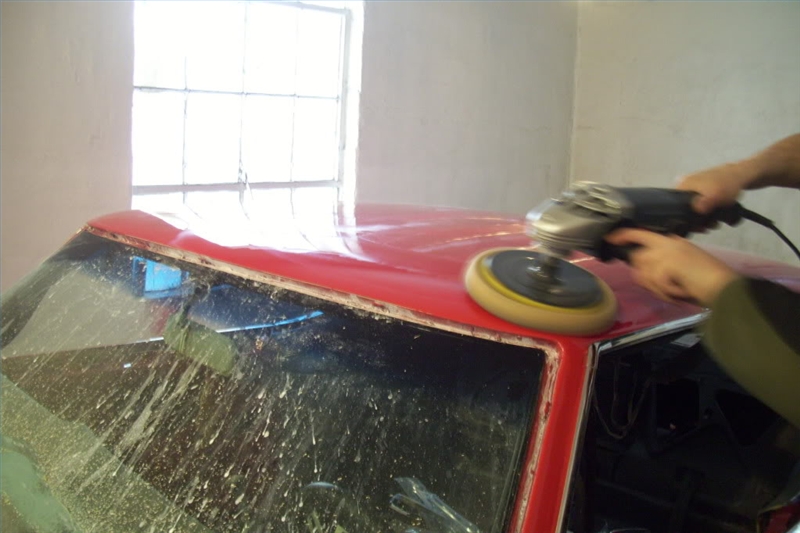
Buffing a vehicle can remove paint imperfections, scratches and oxidation. Properly done, buffing can remove all damage that does not extend down past the clear coat. Professional detailing and paint services cost a fortune. With a little practice, you can use a circular polisher to buff your vehicle to a showroom finish.
Mix a standard size bucket of warm water with ¼ cup of liquid detergent. This will help remove any dirt and petroleum products from the auto body.
Scrub the body of the vehicle using a sponge. Begin at the roof and work downward.
Rinse with clear water using a garden hose.
Hand dry with microfiber towels. The towels will pull off any remaining dirt or grease.
Apply buffing compound to the pad of a circular polisher while it is turned off. Use a light pad to start, but use a more abrasive grade if needed.
Place the pad with buffing compound against the surface of the vehicle body. Work in an area no larger than a foot and a half across. Spread the compound over the area needing buffed with the circular polisher in the off position. Set the circular polisher to 1,000 rpm (rotations per minute) and turn it on. Buff the vehicle body using a side-to-side motion, gradually increasing the rpm to 1,500. Switch to an up-and-down motion to buff surface evenly. Keep the pad in motion to avoid excessive heat buildup that can harm the paint.
Turn off the circular polisher once the buffing compound dries on the vehicle body surface. Spray a 50-50 mixture of water and isopropyl alcohol on the area with dried compound and hand buff with microfiber towels.
Apply more compound and buff with the circular polisher if the problem area is not fixed. Switch to a more abrasive polishing pad if there is no noticeable improvement the second time around.
Add polish to the pad of the circular polisher and spread evenly over the surface of the vehicle while the polisher is in the off position. Turn the polisher on and set it to 1,000 rpm. Move in a side-to-side motion and turn off polisher once the polish begins to dry on the surface of the vehicle body.
Spray surface of the vehicle body with clear water and hand buff with microfiber towels. Polish again if the surface appears hazy or cloudy.
Apply wax to the pad of the circular polisher and spread evenly at a low rpm, such as 500.
Hand buff waxed areas with microfiber towels. Most surface blemishes should be gone. Any remaining areas will require a more intense, professional fix.